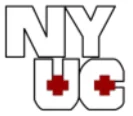Making a prompt decision in situations that can cost anyone’s life, especially when the dilemma is between primary treatment care and urgent care, is crucial. Each works in a different capacity, and each is important for the projected goal to be achieved. Below is a valuable guide that will assist you in making the right decision on which organization you want to associate choose with an urgent care clinic in Queens, New York for your health needs.
Urgent Care Clinics: Three attributes that define rapid and ease of access
What is Urgent Care?
NYUCC is an Urgent Care Clinic In New York that aims to deliver minor medical emergency care that is not severe enough to warrant hospitalization. It offers convenience when one requires attention medical care, but the condition is not life-threatening.
When to Visit Urgent Care:
- In minor injuries (sprains, minor fractures)
- Non-serious sicknesses include the flu, common cold, and other infections.
- Minor cuts needing stitches
- Imaging services and most laboratory services
- Vaccinations
Advantages and Necessity of Urgent Treatment Center:
Accessibility: These centres operate beyond regular working hours, even on weekends, therefore, operationally available when primary care offices and their physicians are not.
No Need for Appointment: In urgent treatment care or an emergency, any individual can visit the treatment center center and seek medical care immediately without any appointment.
Cost-Effective: In many cases, visiting urgent care before directly visiting the emergency OPD department at hospital is less costly and essential for non-emergency situations.
An urgent care clinic is suitable for treatments that require attention in the shortest span possible but are not fatal. It is a middle ground between a primary care facility and an emergency center.
Primary Care: Comprehensive and Continuous
What is Primary Care?
PCAs Primary Care centers are responsible for primary care, which concentrates on a patient’s general health and the prevention of diseases.
When to Visit Primary Care:
- Routine check-ups and physicals
- Chronic disease management (diabetes, hypertension)
- Preventive care (screenings, vaccinations)
- Referrals to specialists
- Managing long-term health issues
Advantages and Necessity of Primary Care:
Continuity: Having a long-lasting relationship with a PCP also guarantees the patient the advantage of consistent healthcare services from the same doctor over time.
Preventive Health: Visiting a PCP on a timely basis allows for the identification of any looming health complications; thus, better health in the long run is a priority.
Primary care physicians are essential for managing overall health, offering preventive care, and providing personalized medical attention.
Consider Urgent Care When:
- If you require clotting for a non-emergency situation outside regular operating hours.
- Your choice of primary care physician is limited, and preferred physicians are not accepting new patients.
- You develop a medical need that must be addressed immediately, such as an X-ray or a series of tests.
Consider Primary Care When:
- You require essential healthcare products and periodic examinations.
- If you have a chronic disease, that means you will need some constant treatment.
- It entails patient and close follow-up from a doctor familiar with the patient’s medical history and state.
Understanding the Differences
Urgent Care: These clinics are an intermediate of primary care and emergency care centers. They cater to those who need attention but need to be more urgent to be taken to the emergency room. This work may involve simple fractures, infections of wounds that require attention right away. Due to the ability to go in without an appointment and the hours of operations are broader than those of primary care physicians, they are suitable for the sudden ailments that may occur.
Primary Care physicians take a more comprehensive and proactive approach to patient health. They treat long-term illnesses, conduct simple check-ups, and employ treatment plans for individual patients. A primary care physician understands one’s medical history, which may be essential when developing chronic conditions.
Conclusion
Two essential and situational healthcare facilities are Urgent Treatment Centers and primary care physicians. A slight difference between urgent care and medical emergencies is that urgent care is a situation where the immediate attention of a physician is required, but the life threat is not there. The physicians who attend to the patients first in urgent care are responsible for further guidance about the general and long-term health of the patient.
You can visit the NYUCC, an Urgent Care Center In New York, to seek the best assistance from professional physicians. It is located at Bellerose Commons. They should also emphasize disease prevention and let them step towards a healthy life. By acknowledging when to take each service, you are confident of the correct treatment at the right time, which assists in preventing ailments in New York. The critical point of distinction that defines the right time for choosing between urgent care and primary care depends on the patient’s needs. Yes, if you know the strengths of each, you will be able to make good decisions related to health and nutrition.

